AS researchers, we are constantly seeking new ways to increase research integrity, uptake and applicability. We want to think beyond traditional methods of producing and sharing research to have greater impact. Using an arts-based approach to research can be an effective way to address these issues. Through the process of creating art as data, meaning can be expressed in more nuanced and embodied ways, affecting interpretation for not only participants and researchers, but for audiences as well.
In 2019 we began working with six female photographers with physical disability. We employed the medium of photography to understand what they wanted to say about themselves, their communities and their experiences of inclusion.
The women in our study combined feminist self-portraits with short narratives to enhance discourse around concepts of sameness and difference. They created their images independently and then together, as a group, we met to discuss any impact, implications or meaning behind the images they created. This process provided space for reflection and empathetic engagement. In addition, the women had an opportunity to speak on behalf of their community to challenge ingrained attitudes and assumptions that continue to keep people with disability apart.
In disability research, using a visual tool like photography adds new dimensions to interpretation as people with impairment, paradoxically, occupy dual spaces of invisibility and visibility. They are stared at yet ignored, their human rights are recognised and mandated, but forgotten or put in the “too hard basket”. Still, for many, identifying as disabled can offer a strong sense of self as well as connections to the disability community.
Given the personal and creative nature of the process, the research produced results that offered fresh and insightful views into contemporary Australian lives, regardless of disability status. In addition, these six women, who were strangers to each other at study outset, described the therapeutic nature of the research process as an unexpected bonus to producing a compelling series of photos on identity and inclusion. A photographic exhibition of this project will be on display from October through December 2020 at Bowen Library in Maroubra, NSW.
Below is one photograph from each of the six women focusing on the therapeutic benefits they discovered in our research project – from the act of photographing themselves, to the strength they garnered from sharing similar experiences of exclusion, and to the empowering feeling of being able to express themselves unhindered.
For Kerry and Melinda, the physical act of photographing their bodies was confronting yet empowering.
Melinda
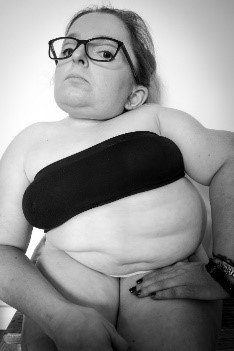
Self-portrait by Melinda Montgomery 2019
This is me
I like to think I’m as much a storyteller as I am a photographer.
This project has really pushed me on how I view myself in comparison with the rest of the world. While I try not to compare myself with the rest of the world, I still catch myself doing it.
I was quite nervous at first. I had planned in my mind the outcome of photographs I wanted to create around the topic of appearance. The end result was somewhat confronting for me, to the point where doubtful thoughts began to creep in. “I’ve gone too far!” “This is grotesque!”
That nagging voice, reminding me I’m different.
As women, we’re constantly told beauty is always from within, so I wanted to flip that on its head. The clothes I wear, the makeup I put on, is my suit of armour to help me fit in with the rest of the world. It gives me confidence and empowers me. That side of me people see all the time. Very few people have seen the other. This is the side of me where I’m at my purest, incredibly raw and vulnerable. I protect this side very fiercely, which is why I feel quite proud to have pushed myself outside my comfort zone. I started with a close-up of my face, and slowly I grew more courageous to zoom out entirely.
This is me.
Kerry
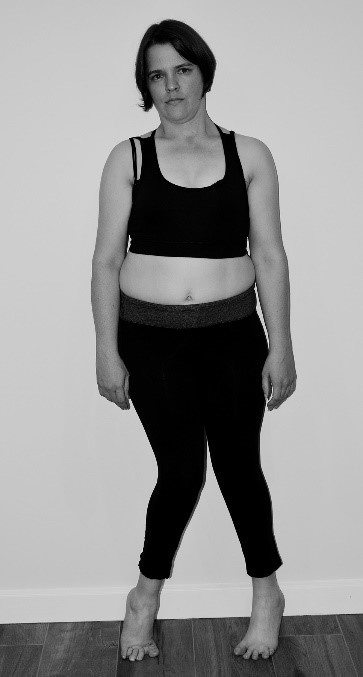
Self-portrait by Kerry Fountain 2019
As I am
This was an important image for me to take, and it’s simply me as I am. This image is important to me as, although I never denied the fact I had a disability, growing up I did try to minimise or ignore it, somewhat giving in to the stigma surrounding disability, and specifically the playground stigma of being a bona fide spastic. I am many things: I am a woman; a daughter; a sister; a soon-to-be-aunty; a music-lover; a bedroom musician; a friend; an employee; a born and bred Sydneysider; a feminist; someone’s partner and now I can even add amateur photographer to that list. But I am also someone with a disability, and to me, that’s important to say, because for so long, I wouldn’t.
Other photographers in the group found therapeutic benefits through the process of sharing their experiences of exclusion and othering.
Evianne
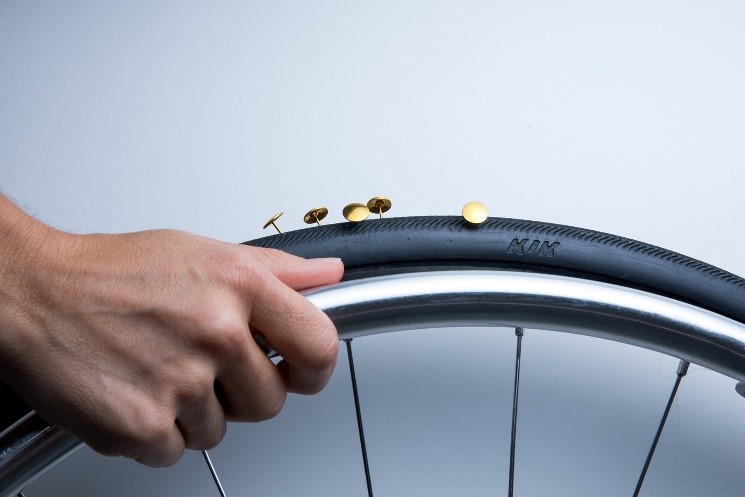
Self-portrait by Evianne Grosvenor 2019
Punctured
I think that during my high school time I felt very excluded and bullied as a person with a disability. Classmates liked to put push pins in my wheelchair tyres, which caused me to have a flat tyre constantly. The school didn’t want to do anything about this because they claimed that if they would address this, they would give the bullies attention and make matters worse. It was a real pain to keep repairing my inflatable tyres. Nowadays, I don’t have inflatable tyres anymore.
Evianne later reflected in a video interview that this photo brought about a “big reaction out of the group and made me think about it more”.
It shocked me and made me think more about that. Significant to me was that the experience for all of us was similar, our struggles are shared by other people. My friends are all able bodied and suddenly there is this group that we can share everything … it was really nice to not feel alone in a way. With the tyres, I thought I was odd and singled out, (but) everyone had similar experience. Not just me.
Karen also responded to Evianne’s photo:
Childhood bullying (is something) that everyone could identify with, and that wouldn’t have come out without this photo. I had packed away in my head about bullying and I have certainly had a lot more of my own experience (of bullying), maybe that was something I pushed back because it was too painful, and I found it quite good to think about it again. Even if you left aside this is photography, as a child growing up you could grow up without knowing other kids with disability. In the country, I had no peers that were disabled. It is kind of hard to develop a disabled identity in isolation. It was a wonderful feeling, like a community, a shared experience. We all know what that feels like. When people get to know you so well that people forget that you can’t do some things, they see your core person.
Karen
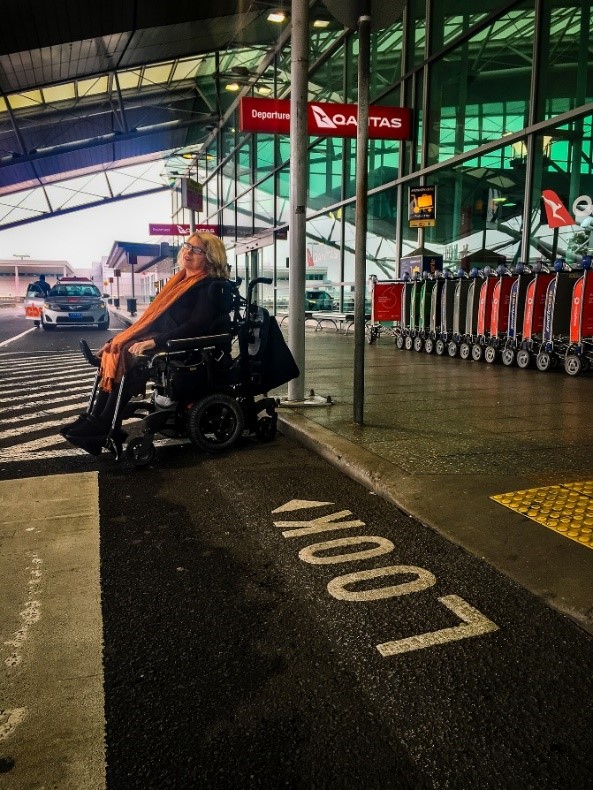
Self-portrait by Karen Peacock 2019
Look at me
As a disabled woman, I am often aware that people stare at me in public. Although I am also desensitised to it and it can be that an accompanying friend who will notice stares/attention more than me. Strangers notice our difference, as visibly disabled people. Yet, we still experience having our access needs ignored or forgotten, as though our presence is not expected. The photograph is saying well, “here I am, look”. It is about claiming our rightful space.
Malissa
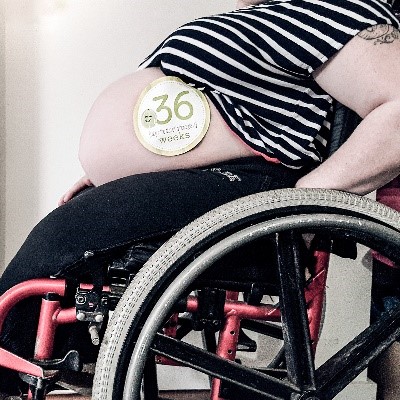
Self-portrait of Malissa Thorpe 2019
36 weeks
This Malissa was looking forward to a new bundle of joy coming soon. Showing her size was scary for her but after publishing this photo on Facebook, she got really great supportive feedback from friends and family.
Marusha
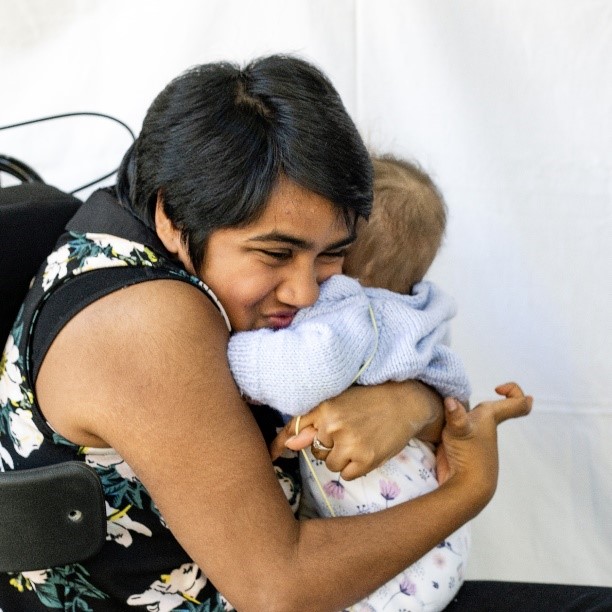
Self-portrait by Marusha Rowe 2019
Power
Having a disability, people can overpower me, taking control of my life and the way they think I should live. But the one thing I have the power to control are my thoughts and how I love.
Later, Marusha described her reactions to the project:
It made me feel differently about my point of view of life. I’m more self-aware of my views in life and it made me think about me as a woman, about who I am now, who I want to become. It made me feel good as I have never done something like that before and have the full control. They are my ideas, quirky and funny ways to express myself. What other people view or see in my photos, well, we all have different ways of looking at things. No person is the same and that is what I came to realise in part. That everyone is different in their own unique way.
In the research team, we too, found space for reflexivity throughout the process: to consider within ourselves the way we look, stare and gaze at our fellow women. Their photos and stories showed us how to refocus, to see beyond disability and into a person’s individuality. They helped us to viscerally understand how narrowly we define concepts of beauty, normal and difference, how historical structures and systems have shaped those definitions and the implications that arise from it. Moreover, they led us down a path to re-see and re-contextualise our own imperfect, beautiful bodies through a more inclusive, empathetic lens.
We hope that by sharing these photos and stories, we have provided a chance to see yourself within these images and to form connections through shared experiences, to find some unexpected benefit of experiencing being othered yet connected. For health practitioners/researchers, we hope we have offered an opportunity to embrace the therapeutic underpinnings of using the arts in the research process.
To end, we share one last quote, from Melinda:
I draw my energy off these women, I absolutely loved it. It just felt safe.
Diane Macdonald is a doctoral candidate at the School of Psychiatry UNSW Sydney and Black Dog Institute at UNSW Sydney. Her research area focuses on the intersection of photography, gender and social justice. Previously, Diane was the Managing Editor of the Australian Journal of Human Rights, the Photo Editor of the Human Rights Defender and the Centre Manager for the Australian Human Rights Centre based at UNSW Law. She holds a Master of Documentary Photography, a Master of Business Administration and has been a professional photographer for over 30 years. She can be contacted at d.macdonald@blackdog.org.au
Angela Dew is Associate Professor Disability and Inclusion at Deakin University, Melbourne where she is engaged in research and teaching related to people with disability and complex support needs. Angela is a sociologist with 38 years’ experience in the Australian disability sector. Her research relates to understanding the specific issues faced by people with cognitive disability and a range of complexities including living in rural and remote locations and coming from an Aboriginal or refugee background. Angela uses qualitative and arts-based methods within an integrated knowledge translation framework to ensure her research results in practical solutions that can be tailored to individuals and local communities.
Katherine Boydell is Professor of Mental Health at the Black Dog Institute and Head of Knowledge Translation, Sydney Partnership on Health, Education, Research and Enterprise (SPHERE). She also holds several Adjunct positions at leading Canadian institutions: Adjunct Senior Scientist, Child and Youth Mental Health Research Unit, Hospital for Sick Children, Toronto; Adjunct Professor, Department of Psychiatry and Dalla Lana School of Public Health, University of Toronto; Adjunct Professor, Graduate Program in Theatre, York University, Toronto. Her program of research focuses on understanding the impact of using a wide variety of art genres in child and youth mental health research, for both knowledge production and knowledge dissemination.
The statements or opinions expressed in this article reflect the views of the authors and do not represent the official policy of the AMA, the MJA or InSight+ unless so stated.

 more_vert
more_vert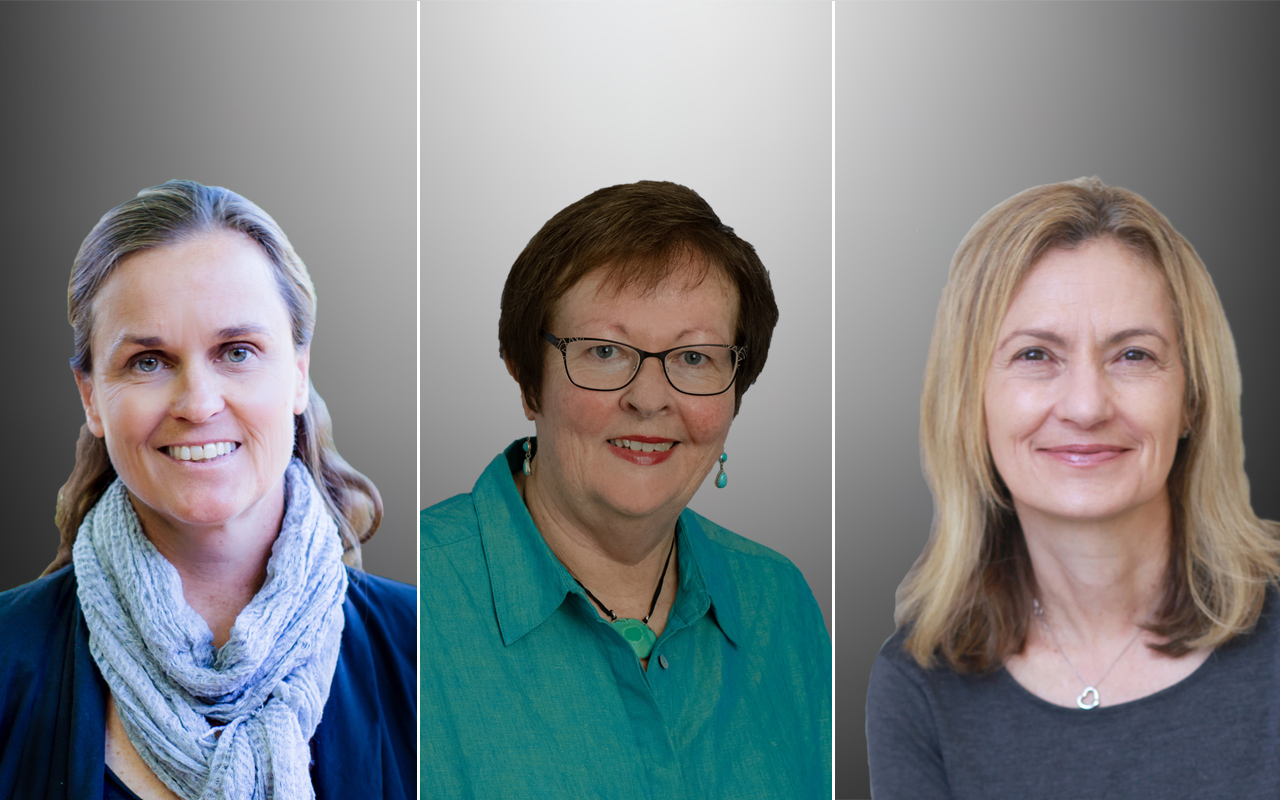
Interesting project. I’d suggest that where people are exploring identity issues through creative media they should be offered access to a Registered Art Therapist. The training incorporates study of psychoanalytic / psychodynamic theoretical perspectives . It is important that people making such powerful images are enabled to work with someone who has knowledge and understanding of creative process as well as conscious and unconscious material. Please refer to the photographic & therapeutic work of Jo Spence.